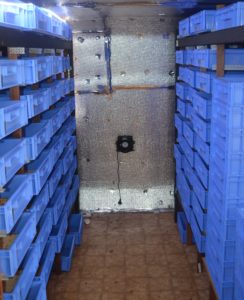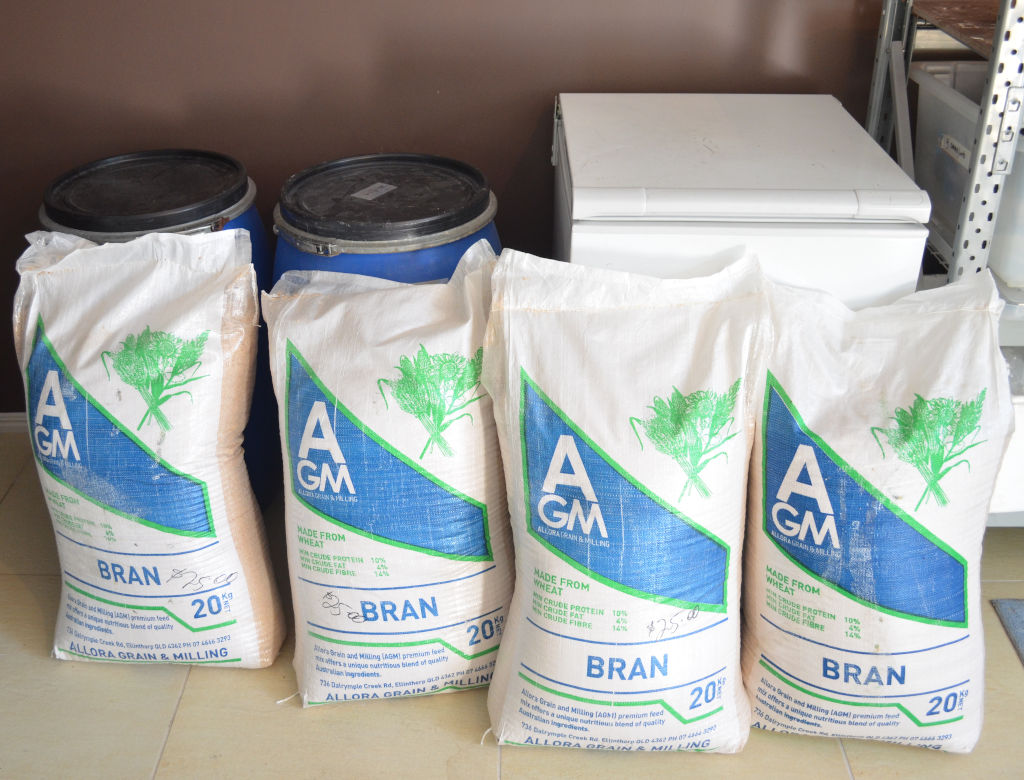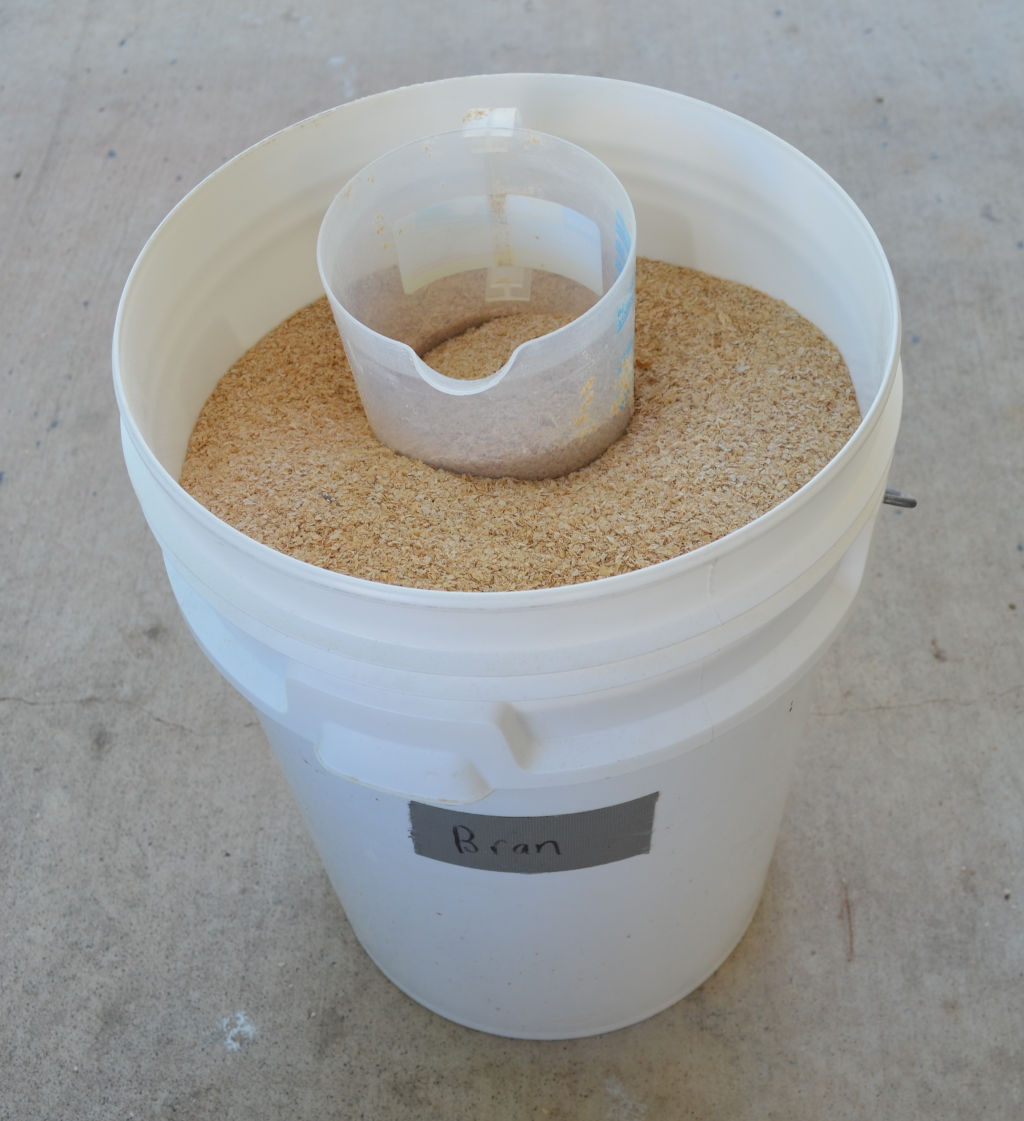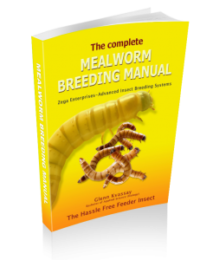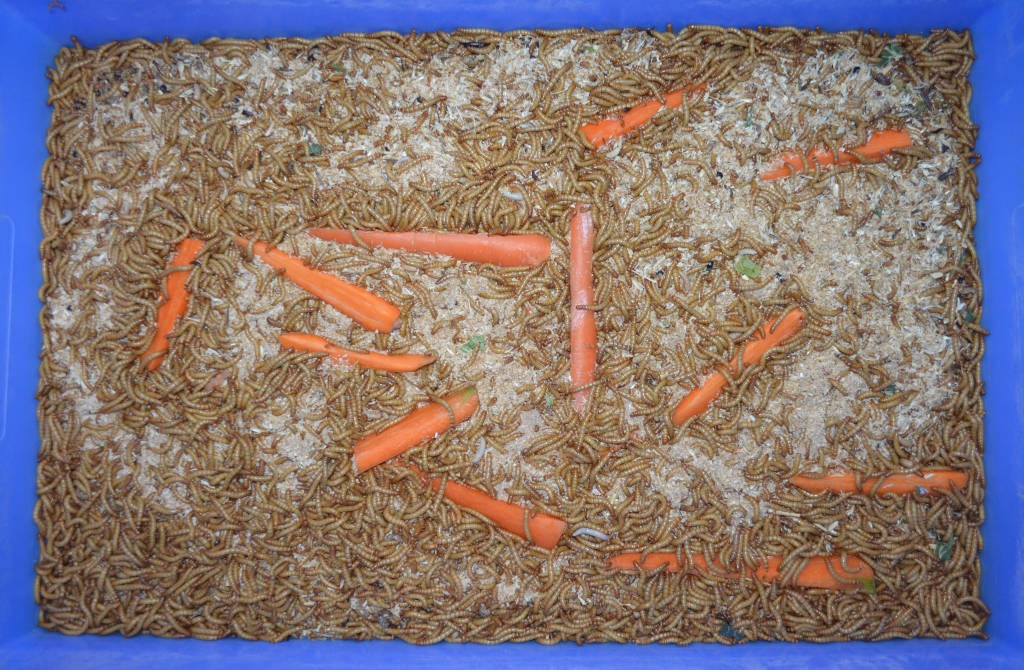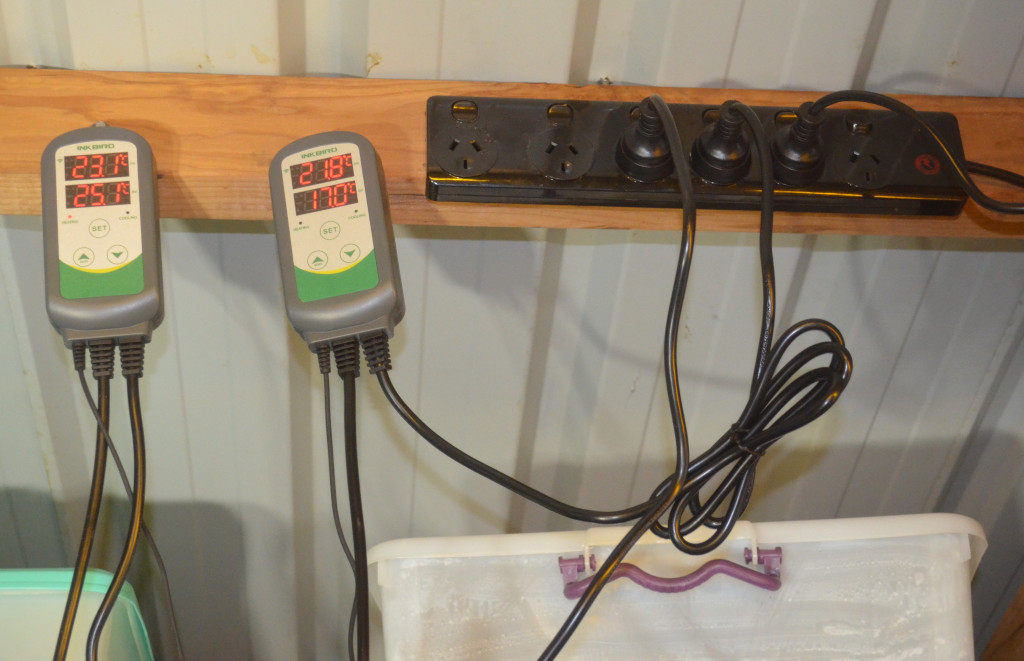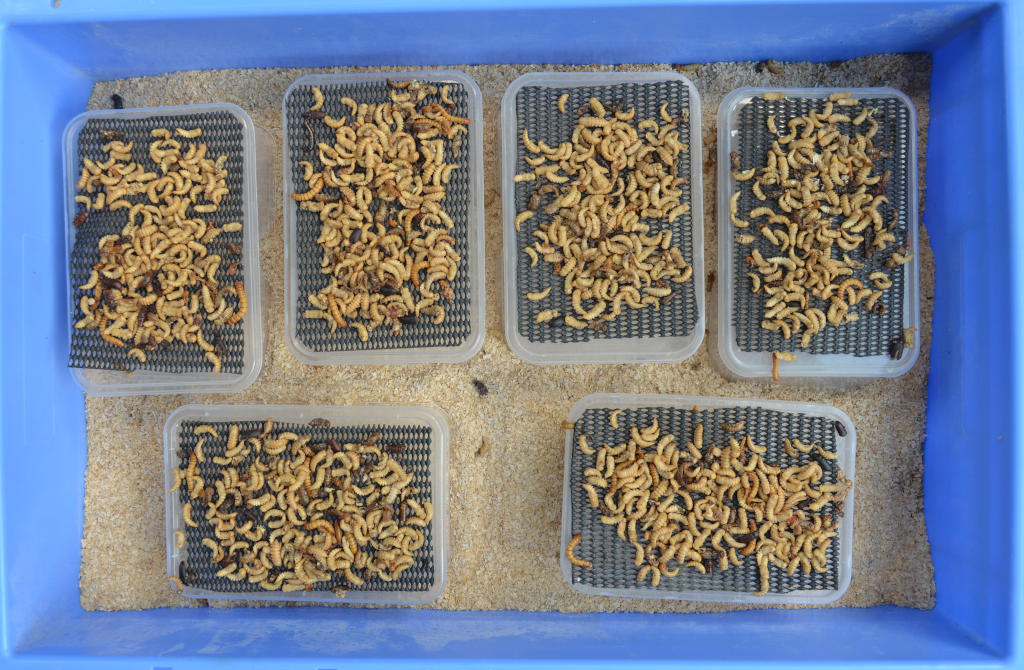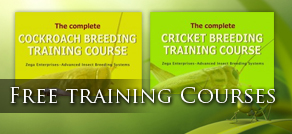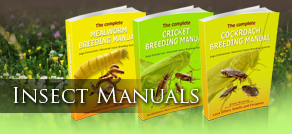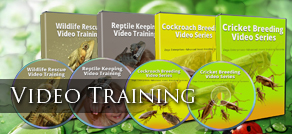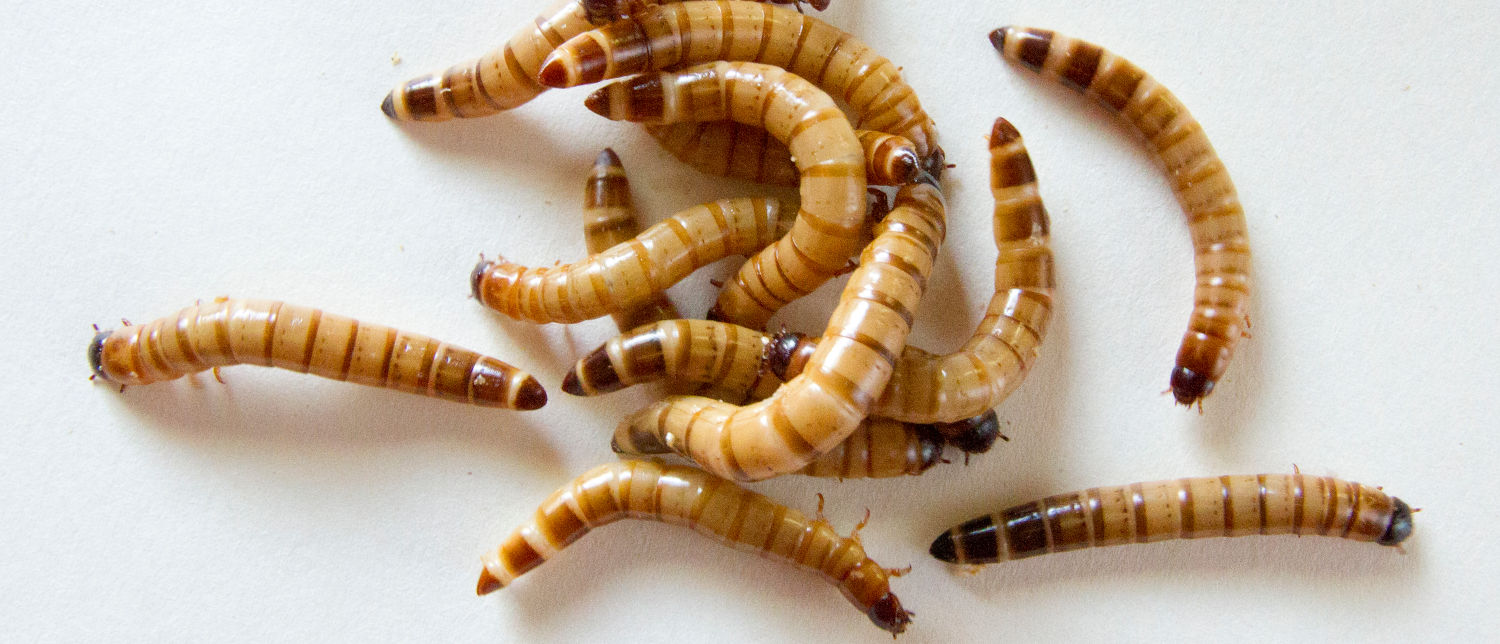
How to Keep your Mealworms Happy and Productive
Below we outline the Dry food, Wet Food, Temperature and General Requirements for Mealworms.
Dry Food (Mealworm Substrate)
- Both beetles and mealworms need a mealworm substrate. Beetles will eat the substrate and use it as a substrate to lay their eggs in. Mealworms however will eat the substrate and use it as a bedding material.
- A mealworm substrate can be made from ground up cereals or meals (grain and seeds).
- Common meals include; wheat, oats or corn. Other alternatives include wholegrain cereals or course flours. You can also provide them with small quantities of whole meal bread and biscuits.
- The dry food must be ground to a fine consistency using a blender so the mealworms have little trouble eating it. Fortunately many of the seed and grain meals are already ground for you.
- Place around 2-3 inches (5-8cm) of mealworm substrate on the floor of the container. Mealworms have a big appetite as they are preparing for the pupa stage and will need regular top ups. The beetle stage does not require to be replenished as often.
- A week or two before feeding mealworms to your animals, you can add extra nutrients to the substrate for a nutritional boost. Nutritional boost foods include; chicken layer pellets or calcium carbonate powder (both are high in calcium), chick starter pellets (extra nutrition for fast growth), dog food (high protein) and lots of fresh vegetables (for moisture).
Wet Food (Fruit and Vegetables)
- Both mealworms and beetles need a regular and fresh supply of fruit or vegetables for moisture. Wet food should be added every few days (or as required), and the old food should also be removed at the same time.
- Common wet foods include cut up slices of raw apple, potato, pumpkin, carrot and cabbage. Root vegetables such as potato and carrot generally last longer than wet fruits, however many other scrap fruit and vegetables from your kitchen are fine.
- Always use fresh fruit and vegetables and avoid soggy, fermenting or excessively wet foods (i.e. water melons, strawberries). Other things to avoid include; onion, avocado, lemon/limes, egg plants and cooked vegies.
- To reduce spoiling of the substrate, place wet foods onto a piece of flat plastic.
- No other water source is required. A water bowl will just drown the mealworms or beetles.
Temperature
- For breeding you need to keep room temperatures or greater around 70-75 F (21-24 C). For more productive production, you need to keep a constant temperature of 75-78 (24-26 C).
- Try placing their breeding containers near a warm part of the house or provide them with a under the tank heater which sits under the container.
- Always use a thermometer to regulate the temperature and prevent overheating
- You can place mealworms in the refrigerator for a few month to slow down their growth, but this will prevent them from breeding. This can be extended for longer periods if you remove them out of the fridge for 24-48 hrs once per week. Be sure to provide mealworm substrate and ventilation.
General requirements
- In most cases normal ambient humidity should be adequate for growing mealworms, however you will get faster growth if humidity is increased. Excessive humidity however with result in mold and smells.
- Some areas which experience low humidity (cool, dry climates) you may need to provide additional humidity by placing a high sided bowl with water into the container. Aim for around 50-60% R.H. You can reduce heat loss and increase humidity by placing a breathable towel over the top of the container.
- No special lighting is required, normal day/night cycles are fine. Mealworms do not like bright environments however and if your containers are clear you can place pieced of cardboard over the substrate for cover.
As part of the Mealworm book project we renovated a 6m (20 foot) caravan into an insect business which breeds Mealworms, crickets and Woodies. We have bench marked all build costs, operation costs (energy, food, time).
“The Complete Mealworm Breeding Manual ” which will greatly increase your knowledge of how to breed mealworms and super worms with greater consistency and ease. As with all our Feeder Insect Book Series, we will overhauled every aspect of mealworm production including…
- Commercial and small Scale production, both yellow and super/giant mealworms.
- Breeding
- Food and water requirements
- Making food and moisture requirements
- Heating/storage
- Container design
- Maintenance/pest management,
- Cleaning and maintenance
- Grading/selling/commercial production
- Lots and lots more!!
We will show you the commercial tips and tricks to breed a productive and low maintenance mealworm colony. Click Here for more about the “Mealworm Manual Project” and to view the books contents.
Free Cricket Breeding Course
For more information on how to breed crickets, get your free 9 lesson today. This training course has videos and lots of useful information which covers:
- How a conventional cricket breeding system works
- How our proprietary cricket breeding system works
- Cricket biology
- Container design
- Feeding, gut loading
- Heating
- Pest management and lots more…
Why not Turn an Expense Into Income?
For Information and advice on commercial production, Click Here. We have been breeding insects to Zoos, Wildlife carers, pet stores and the public for over 14 years.
We can show you how to build a profitable insect business. See below how you can follow our latest project converting a 20 foot caravan into a profitable insect business.
